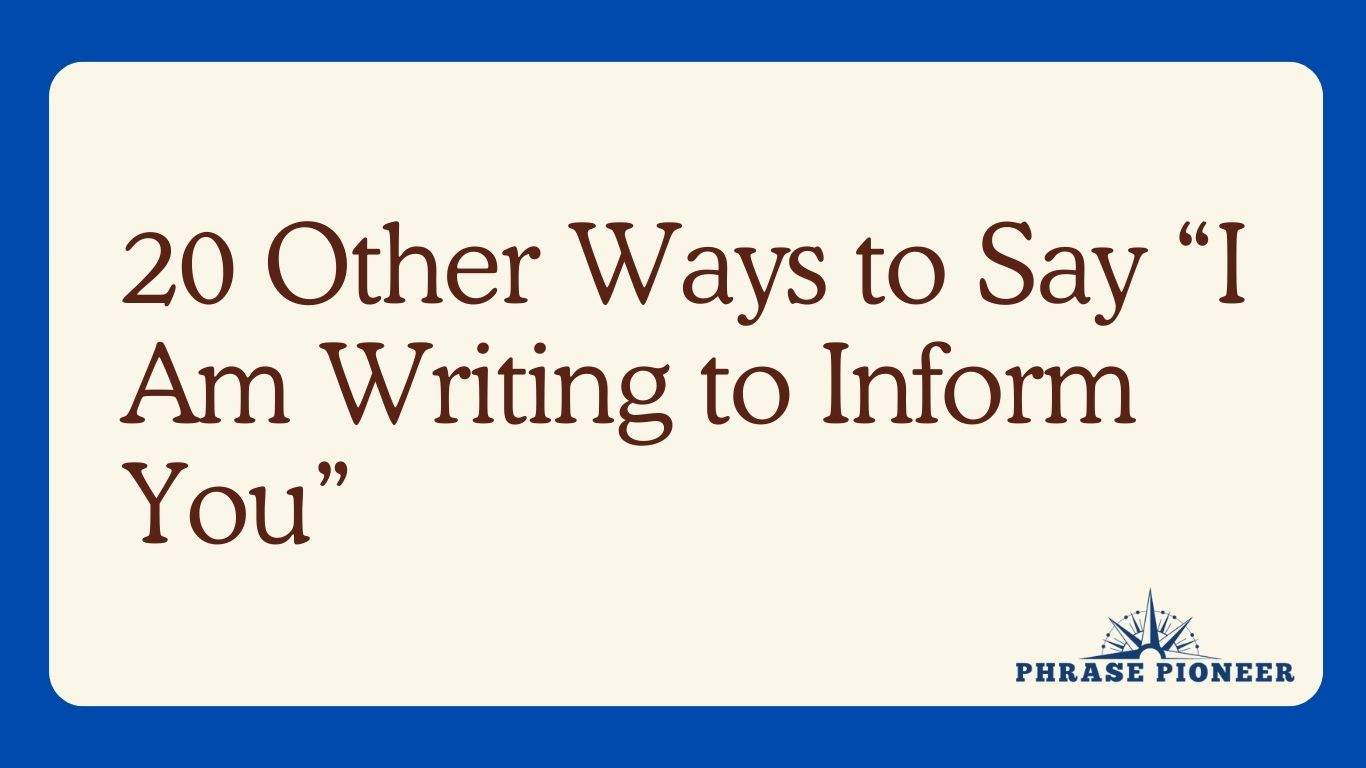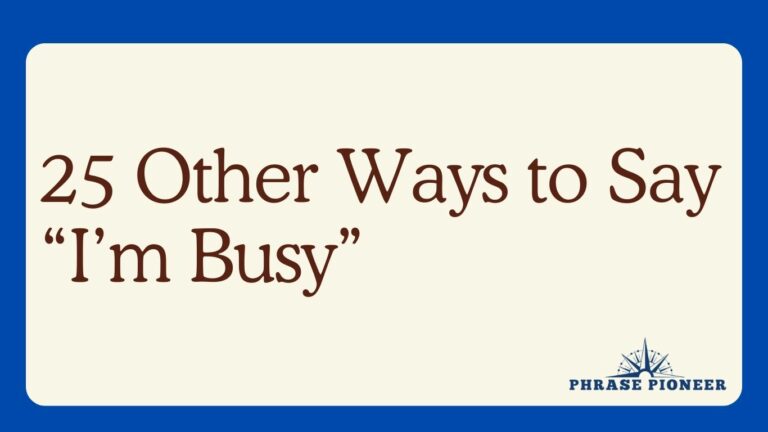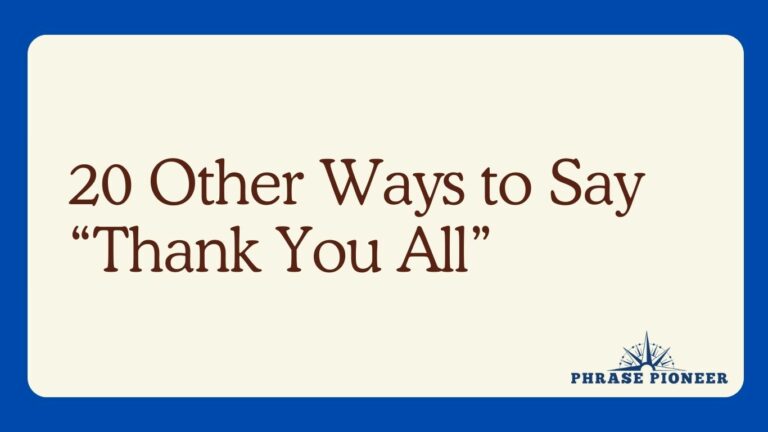20 Other Ways to Say “I Am Writing to Inform You”
Initiating a message with “I am writing to inform you” serves to direct the recipient’s attention to the important information you’re about to provide.
This phrase can become repetitive, especially in a professional setting where clear communication is key.
To keep your correspondence engaging, it’s beneficial to have a variety of ways to express the intent to convey information. Here are 20 alternative ways to say “I am writing to inform you,” catering to different levels of formality and context.
Formal Notifications
When addressing colleagues, superiors, or clients, these formal alternatives convey the purpose of your message with suitable professionalism.
1. I wish to bring to your attention…
- Example: “I wish to bring to your attention the latest amendments to the company policy.”
- Explanation: A polite, formal way of highlighting information that requires the recipient’s notice.
2. It is of importance that I communicate the following…
- Example: “It is of importance that I communicate the following changes to our operational model.”
- Explanation: This statement reflects the significance of the information being shared.
3. Allow me to update you on…
- Example: “Allow me to update you on the findings from our recent market research.”
- Explanation: A respectful request for the recipient’s attention to new or updated information.
Clear and Direct Approaches
For clear-cut communication where directness is valued, choose one of these straightforward alternatives.
4. I would like to inform you about…
- Example: “I would like to inform you about the upcoming staff reallocations.”
- Explanation: Simply states the intent to provide information about a specific topic.
5. Please be advised that…
- Example: “Please be advised that our office hours will be changing starting next month.”
- Explanation: Common in business correspondence, it alerts the recipient to noteworthy details.
6. I am contacting you to relay information regarding…
- Example: “I am contacting you to relay information regarding the postponed shareholders’ meeting.”
- Explanation: Specifies the purpose of the contact and the topic of information.
Polite Suggestions
These phrases offer a courteous yet subtly assertive way to impart information to the recipient.
7. Kindly note that…
- Example: “Kindly note that your application has been moved to the next phase of review.”
- Explanation: A gentle prompt that emphasizes the importance of the information to follow.
8. I must share with you…
- Example: “Due to recent developments, I must share with you our revised privacy policy.”
- Explanation: Reveals the necessity of sharing information, implying a level of urgency or obligation.
9. You may wish to be aware of…
- Example: “You may wish to be aware of the upcoming maintenance to our IT infrastructure.”
- Explanation: Suggests that the information provided is something the recipient may find important.
Casual and Informal Check-ins
In a casual work environment or when addressing individuals with whom you have an informal rapport, try these laid-back phrases.
10. Just a quick heads-up…
- Example: “Just a quick heads-up, we’re moving the weekly meet-up to Thursday.”
- Explanation: A relaxed phrase often used to pre-empt the reader about brief yet relevant information.
11. Dropping you a line to say…
- Example: “Dropping you a line to say that the survey results are in and look promising.”
- Explanation: An informal and friendly introduction that segues into the sharing of news.
12. Hey, I thought you’d like to know…
- Example: “Hey, I thought you’d like to know that we’ve won the bid for the new project.”
- Explanation: Very informal, implies that the information could be of interest or exciting news.
When Imparting Time-Sensitive Information
To communicate urgency or the need for immediate attention, these expressions serve the purpose.
13. I’m reaching out urgently to inform you…
- Example: “I’m reaching out urgently to inform you that the deadline for submissions has been brought forward.”
- Explanation: Highlights the urgency of the information being communicated.
14. Prompt attention to the following information is necessary…
- Example: “Prompt attention to the following information regarding our response to the audit is necessary.”
- Explanation: Indicates that the information is critical and requires immediate review.
15. It is imperative for you to be aware of…
- Example: “It is imperative for you to be aware of the changes to the compliance regulations effective immediately.”
- Explanation: Stresses the crucial nature of the information for the recipient’s immediate understanding.
Offering Further Clarification
If the intention behind sending the message is to clarify or provide additional details, these phrases will be appropriate.
16. For clarification, please note that…
- Example: “For clarification, please note that the terms ‘active client’ and ‘engaged client’ are defined differently in our reports.”
- Explanation: A useful lead-in for an explanation or elaboration on previous communications.
17. I am conveying the following details for your understanding…
- Example: “I am conveying the following details for your understanding of the revised project scope.”
- Explanation: Speaks to the intent of making certain details clear to the recipient.
18. To provide additional insight…
- Example: “To provide additional insight, the recent fluctuations in performance are attributed to seasonal trends.”
- Explanation: Prefaces the provision of more in-depth information related to previously discussed topics.
Casual Conversation Starters
Initiating an informal conversation that will include factual information can benefit from a friendly opening.
19. I wanted to share…
- Example: “I wanted to share that our team feedback has been overwhelmingly positive.”
- Explanation: A conversational way to introduce information that might be welcomed or pleasing.
20. Here’s some news…
- Example: “Here’s some news: the management has approved our proposal!”
- Explanation: An informal and enthusiastic introduction to information likely to evoke a response.
Conclusion
Conveying information effectively is crucial in both written and verbal communication. Whether in a formal email, a quick office chat, or a significant announcement, the way you frame your message can influence how the content is received.
From formal to casual settings, the 20 alternatives to “I am writing to inform you” provided here give you a useful range of choices to appropriately structure your informative messages and maintain a dynamic correspondence style.
Differentiating your language according to the setting, urgency, and the nature of the information ensures clarity in communication and shows consideration for your recipients.







